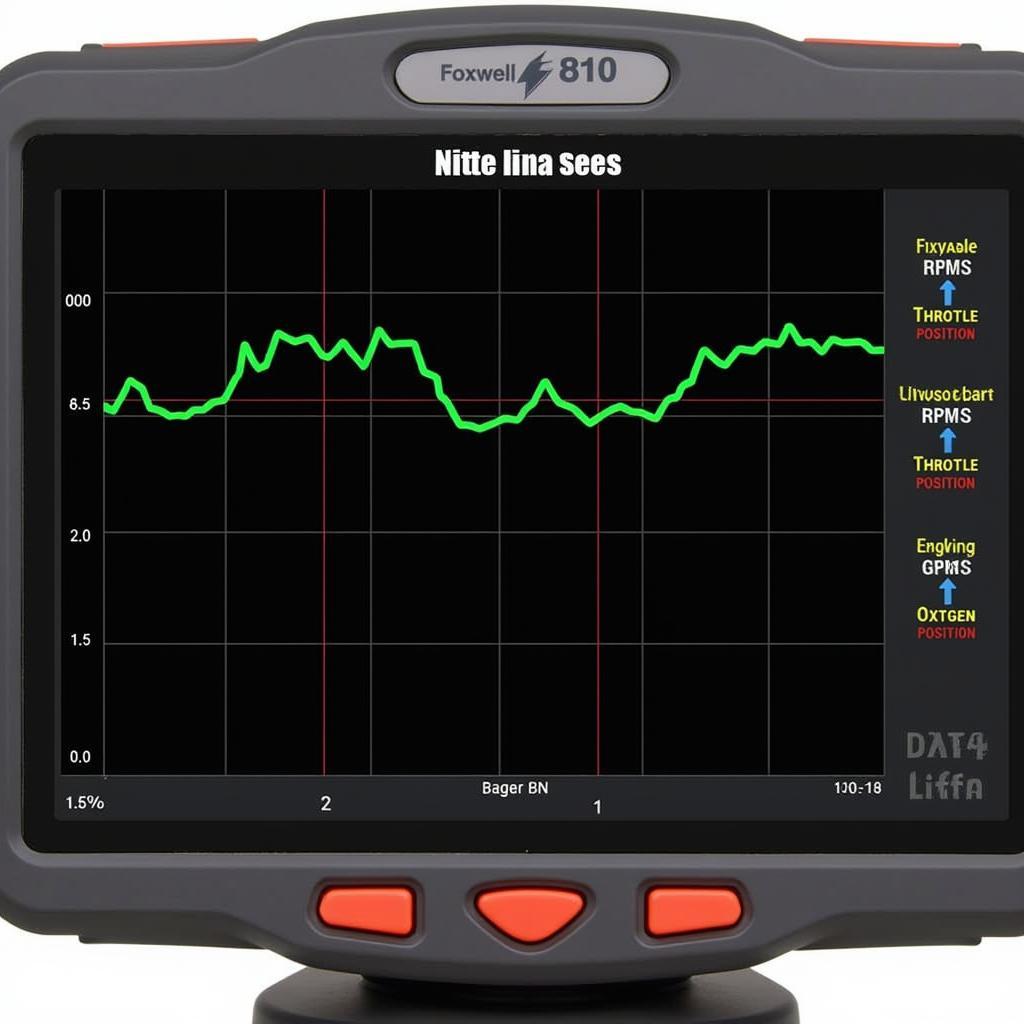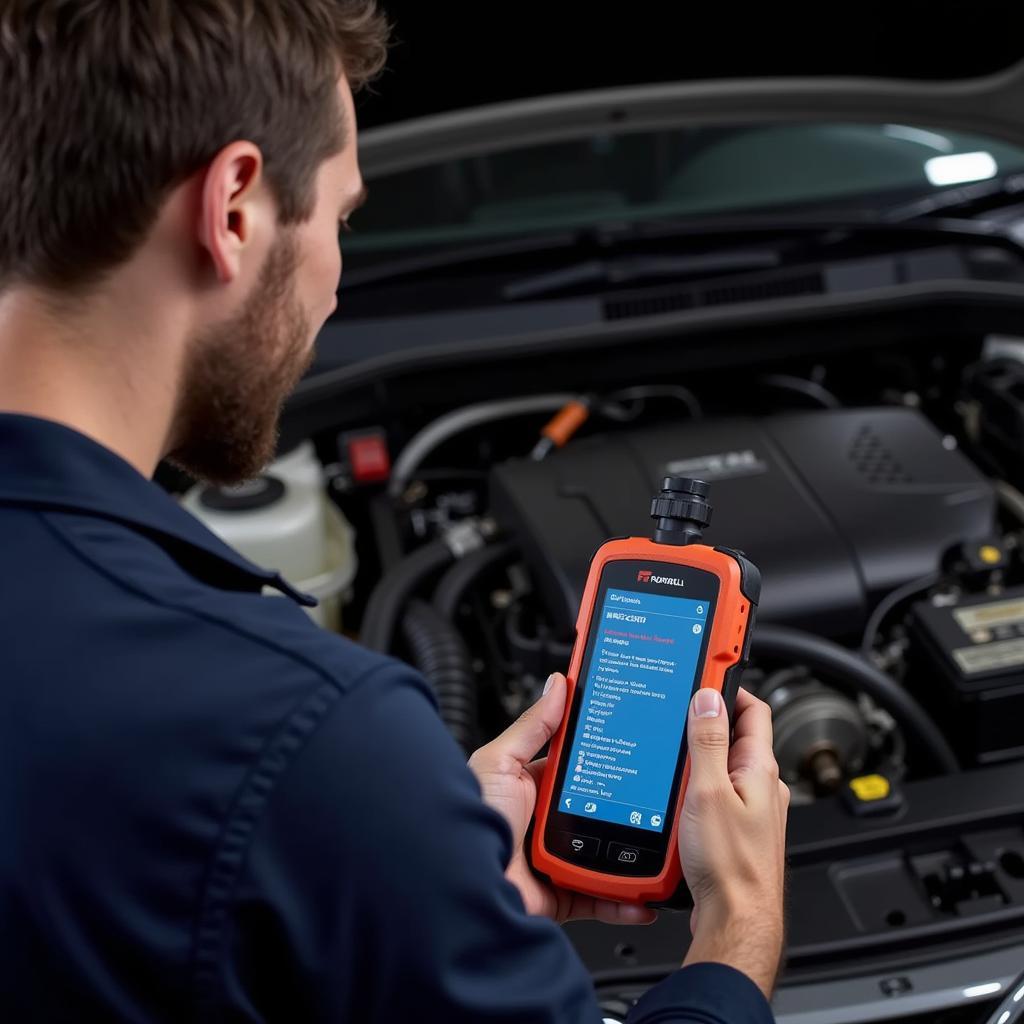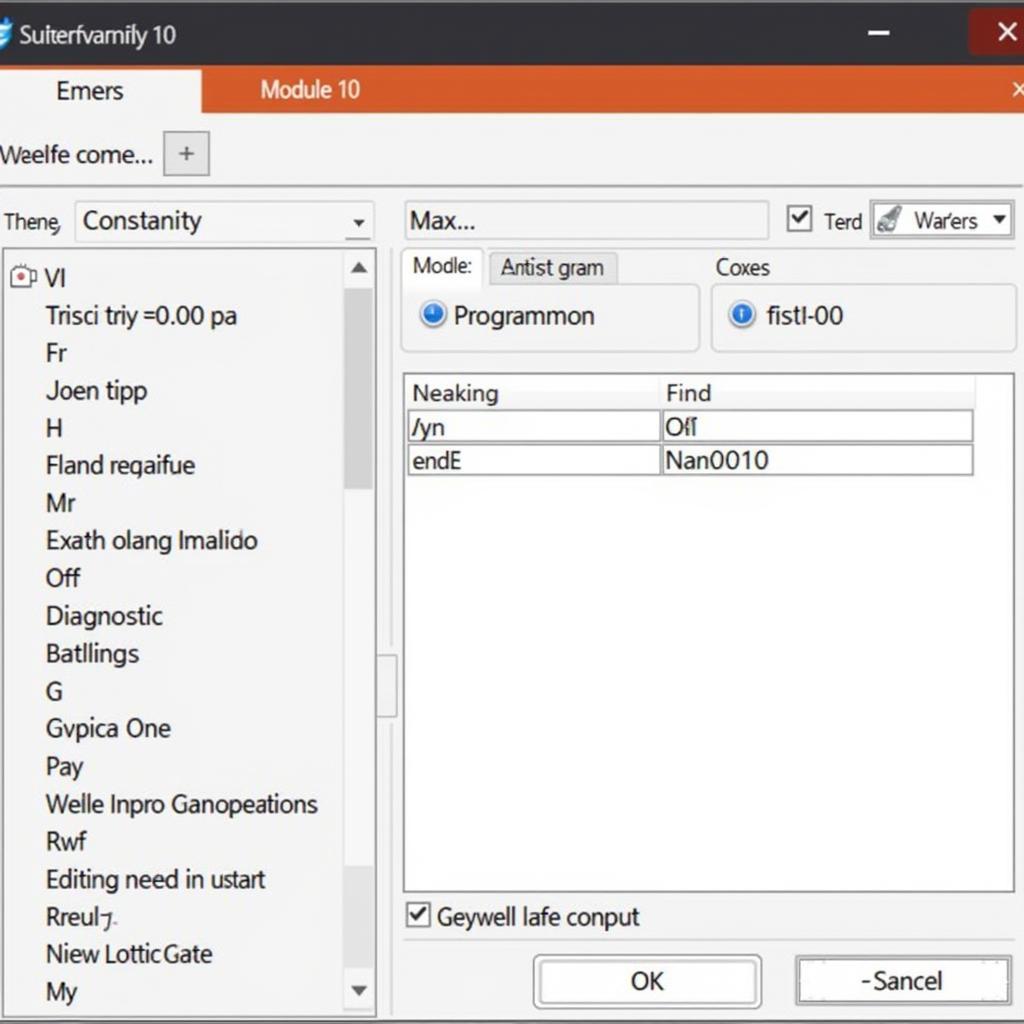The Foxwell NT810 obd2 scanner is a powerful tool that allows you to delve into your car’s computer system, understand its health, and diagnose issues. At the heart of this functionality lie the Foxwell 810 Scan Codes. These codes, often appearing as a jumble of letters and numbers, are the key to unlocking the secrets your car is trying to tell you. This comprehensive guide will equip you with the knowledge to decipher these codes and take control of your car’s maintenance.
What are Foxwell 810 Scan Codes?
Simply put, Foxwell 810 scan codes are standardized alphanumeric codes that represent specific car problems. When your car’s onboard computer detects an issue, it generates a Diagnostic Trouble Code (DTC), which is what the Foxwell 810 retrieves and displays. These codes are categorized broadly into four types:
- P Codes (Powertrain): These relate to the engine, transmission, and associated emissions systems.
- B Codes (Body): These pertain to issues with the body components, such as airbags, power windows, and central locking.
- C Codes (Chassis): These indicate problems with the chassis systems, including ABS, traction control, and electronic suspension.
- U Codes (Network & Communication): These relate to issues with the vehicle’s communication network, which connects various modules.
Understanding these categories gives you a general idea of where the problem lies before you even begin to decode the specific code.
Deciphering Foxwell 810 Scan Codes
Each Foxwell 810 scan code is structured to provide specific information about the problem. Let’s break down the code structure:
Example Code: P0302
- First Character (P): Indicates the system, in this case, “P” for Powertrain.
- Second Character (0): Refers to whether the code is generic (0) or manufacturer-specific (1).
- Third Character (3): Pinpoints the specific subsystem within the Powertrain category. In this case, “3” signifies the ignition system or misfire.
- Fourth & Fifth Characters (02): These identify the exact nature of the fault within the subsystem. Here, “02” indicates a misfire detected in cylinder number 2.
Using Foxwell 810 Scan Codes for Diagnosis
While the Foxwell 810 scan tool effectively retrieves and displays these codes, it’s important to remember it doesn’t tell you how to fix the problem. It’s a diagnostic tool, not a mechanic in a box. Here’s how you can use the information effectively:
- Note Down All Codes: Don’t just focus on the first code that pops up. The Foxwell 810 might reveal multiple codes, which could be interconnected.
- Research the Codes: Refer to a reliable online database or a repair manual specific to your car model to understand the codes thoroughly.
- Don’t Jump to Conclusions: Avoid directly replacing parts based solely on the codes. Further investigation is crucial.
- Use the Codes as a Starting Point: The codes guide you toward the affected system, but you need to perform visual inspections, component tests, and further diagnostics to pinpoint the root cause.
Common Foxwell 810 Scan Codes and Their Meanings
Here are a few examples of common Foxwell 810 codes and what they generally indicate:
- P0420: Catalyst System Efficiency Below Threshold (Bank 1) – This typically suggests a problem with the catalytic converter.
- P0171: System Too Lean (Bank 1) – This code points towards an issue with the air/fuel mixture being too lean (too much air, not enough fuel).
- P0300: Random/Multiple Cylinder Misfire Detected – This indicates that the engine is misfiring on one or more cylinders.
- C1100: ABS/Traction Control System Malfunction – This suggests a problem within the Anti-lock Braking System (ABS) or Traction Control System.
*”Knowing how to interpret these codes empowers car owners to engage in more informed conversations with mechanics, potentially saving time and money.”
- – John Smith, ASE Certified Master Technician
Beyond Basic Codes: Leveraging the Foxwell 810’s Capabilities
The Foxwell 810 scanner offers more than just basic code reading. It provides advanced features like:
- Live Data Stream: Access real-time data from various sensors, allowing you to monitor engine parameters, transmission temperatures, and more.
- Freeze Frame Data: When a fault occurs, the Foxwell 810 captures a snapshot of critical engine parameters, providing valuable clues about the conditions leading to the issue.
- Component Testing: The scanner can activate certain components like solenoids, relays, and actuators to test their functionality.
 Foxwell 810 Advanced Features
Foxwell 810 Advanced Features
Conclusion
Understanding Foxwell 810 scan codes is an essential skill for anyone who wants to take a proactive approach to car maintenance. It empowers you to communicate effectively with mechanics, make informed repair decisions, and potentially save yourself from costly surprises. Remember, while the Foxwell 810 is a powerful tool, it’s most effective when used in conjunction with a good understanding of your vehicle and a systematic approach to diagnostics.
For expert advice on using your Foxwell 810 or assistance with any car repair needs, contact ScanToolUS at +1 (641) 206-8880 or visit our office at 1615 S Laramie Ave, Cicero, IL 60804, USA.
FAQ
1. Can I clear Foxwell 810 scan codes myself?
Yes, the Foxwell 810 allows you to clear the codes. However, it’s crucial to address the underlying problem that triggered the codes in the first place. Clearing codes without fixing the issue is like silencing an alarm without addressing the fire.
2. Are Foxwell 810 scan codes universal?
While the code structure and general categories are standardized, some codes can be manufacturer-specific. Always refer to a reliable source for accurate information on your particular car model.
3. My check engine light is off, but the Foxwell 810 is still showing codes. Why?
Some codes are “pending” or “history” codes. Pending codes indicate a potential issue that hasn’t been confirmed yet, while history codes are past codes that haven’t been cleared.
4. How often should I scan my car with the Foxwell 810?
It’s good practice to scan your car for codes every few months, even if you don’t notice any issues. Early detection can prevent minor problems from escalating into major repairs.
5. Is the Foxwell 810 compatible with all car makes and models?
The Foxwell 810 is compatible with a wide range of vehicles. However, it’s essential to check the manufacturer’s specifications to confirm compatibility with your specific car model.


